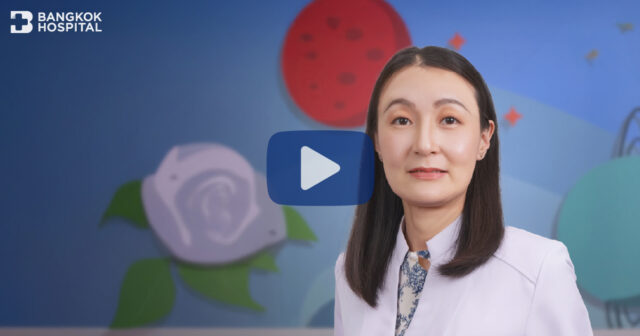Choosing a school with a good community and quality for your child is a concern for many parents, especially when it comes to selecting a school for children in the pre-school age with numerous options available. Knowing the principles of choosing the right school for your child is therefore important.
Choose Based on Age
Choosing the right school according to the age of the child should consider the age ranges, divided into 2 groups:
- Pre-School Age group
- School Age group refers to children studying in grade 1 and above. For preschool children, learning through interactive play activities is effective. Research has found that if these children receive quality schooling (High-Quality Day Care), they will have better cognitive, language, and social skills than children who do not have such experiences.
Criteria for Considering a Quality School or Institute
The considerations for whether a school or institute is of quality rest on 3 principles:
- Quality of teachers can be evaluated by the teacher-to-child ratio and the number of children in a group. For example, children aged about 2 – 3 years should have a teacher-to-child ratio of 1:4 – 5, with no more than 10 children in a group. Children aged 3 – 4 years should have a teacher per 6 – 7 children, and no more than 14 children in a group. Furthermore, the educational qualifications of the teachers should be considered. Teachers who have directly graduated in early childhood education, have a positive attitude towards children, and continuously update their knowledge can significantly enhance the quality of learning. Additionally, having the same teacher over a long period helps teachers become familiar with and understand each child well, contributing to the continuous development of each child’s potential.
- School policies on cleanliness and infection prevention, including injury prevention for children, such as regular toy cleaning, teaching children to wash their hands before and after eating or after using the bathroom, considering the safety of toys and the area where children play to be adequately soft to cushion falls during play. Moreover, schools should have plans for responding to accidents, such as having staff capable of providing basic first aid and having a system for hospital referral. Vaccinating teachers regularly to prevent infections from sick children to others is also important.
- Activities or curriculum of the school appropriate for promoting development in various aspects according to age, including:
- Physical integrity skills should include activities for children to exercise, strengthening muscles, flexibility, and balance training, coupled with appropriate nutritional management for child growth.
- Developmental promotion should include activities enhancing language skills, fine and gross motor skills, and social skills, such as planning, following rules, sharing, as well as playing or interacting with peers. Children should also be trained to control themselves and to be self-reliant, preparing them for school age and clearer self-development as they grow older, to be more independent.
- Concentration and focus should be promoted by allowing children to complete activities sequentially, reducing unnecessary environmental distractions.
- Skills before entering school (Pre – Academic Skills) Research has shown that training these skills before school age can help children succeed academically in the future, such as recognizing letters, understanding phonics, and mathematics skills like counting. These principles for choosing a school can also be applied to managing home schooling.
Approaches to Early Childhood Education in Thailand
Choosing a school for children varies from country to country, whether in Europe or America. As for Thailand, there are quite a few options available, but each has its advantages and disadvantages. It must first be understood that for young children, learning basics come from play. Therefore, wherever children find themselves under stress, learning will not be as effective as it should be. A good relationship and trust between teachers and children also play a significant part in learning. Therefore, choosing teachers with a positive attitude towards children is necessary.
The approaches to early childhood education in Thailand can be majorly categorized into 2:
- Academic approach focuses on different subjects’ content to prepare children for entrance exams of well-known schools in primary grade 1 that parents desire.
- Emphasizing personality development, character, and readiness of children rather than focusing solely on academic content. This approach comes in many forms, such as:
- Montessori teaching method composes an environment that facilitates learning with specifically designed locations and materials. Montessori relies on the potential of children and views that learning naturally arises from within. Teachers are not knowledge providers but supporters and facilitators of learning opportunities. The Montessori concept is an organized life, arranging systems in life. It focuses less on play activities but uses tools that make learning specific and directed, like a jigsaw puzzle that needs to be correctly assembled to complete. Moreover, it emphasizes teaching life skills such as hand washing and meal-taking. Schools in this approach create environments that allow children to be reliant on themselves, with appropriately sized fixtures like sinks or dining tables. A true Montessori school has classes with children of different ages together to foster exchange and learning, where older children can lead and help the younger, who, in turn, learn and imitate behaviors from the older ones. Often, children learn better from each other than from adults.
- Waldorf method based on anthroposophy. The education method emphasizes human individuality and connection with the environment, people, and society to find one’s balanced place in the world, and focuses on discovering true potential without much reference to societal values or marketing. In preschool ages, activities revolve around play under teacher supervision, while academic studies begin at primary levels.
- Reggio Emilia approach is a Co – Constructivism learning method believing in learning by doing, trying, and erring, within a group discussion leading to understanding of interesting topics, then presenting findings through various media. Its hallmark is an adaptive curriculum based on children’s interests, where teachers explore answers alongside children, akin to scientific experiment partners, promoting knowledge and experience exchanges, centering on the learner.
Play is Important for Pre-school Children
For pre-school children, play is crucial as children learn effectively through play, and adults play an essential role as well, for they can extend the learning and broaden the range. Regarding choosing toys for children, it should be appropriate for their age and safe, such as:
- Children in their first year should focus on different sensory experiences, such as picture books, soft balls, or toys that respond when pressed, possibly making sounds or popping toys.
- Older children, like 2-year-olds, should select toys that enhance different skills, such as toys promoting fine motor skills and cognitive abilities like sorting different colored buttons into a coin bank, arranging rubber rings of various sizes onto a pole, or fitting geometric blocks into matching holes.
Besides selecting age-appropriate toys, guardians should choose toys that can be used long-term and offer diverse benefits. Often, guardians buy many toys and store them together, allowing the child to play with several at once but not completing any. Eventually, this can lead to a lack of focus and discipline in the child. Therefore, guardians should promote organization and teach children to play with toys one by one until completion by organizing play spaces at home, such as a reading corner, imagination play area, or physical development toy zone.
Beyond observing what children are learning or playing at school and adding related activities at home can create continuity and further develop those skills and thoughts. Concerning taking children to play in ball pits at malls, guardians should be cautious about cleanliness and the risk of infectious diseases, which is crucial.














